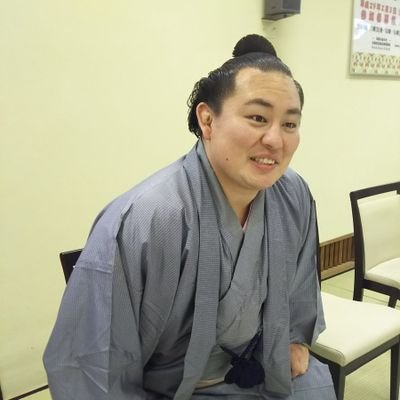In sumo, one of the most important terms is “Kachikoshi,” meaning a winning record. Each Grand Sumo tournament lasts for 15 days, and wrestlers must fight one bout per day. If a wrestler achieves 8 or more wins, he secures Kachikoshi, which is directly tied to promotion, demotion, and future opportunities. Understanding Kachikoshi allows beginners and international fans to better enjoy the drama and stakes behind each match.
The Basic Meaning of Kachikoshi
In sumo, Kachikoshi refers to finishing a tournament with more wins than losses.
Grand Sumo holds six tournaments each year, and each tournament runs for 15 consecutive days. Wrestlers fight once per day, and their results accumulate to form their final record.
If a wrestler earns 8 or more wins over 15 days, he achieves Kachikoshi. Conversely, with 7 or fewer wins, he suffers a “Makekoshi” (losing record). This rule is simple but extremely important, as it directly influences a wrestler’s rank and career.
Comparison of Kachikoshi and Makekoshi
| Record | Term | Meaning |
|---|---|---|
| 8 wins or more | Kachikoshi | Leads to promotion opportunities or securing rank |
| 7 wins or fewer | Makekoshi | High risk of demotion |
| 15 wins | Perfect Championship | The most prestigious achievement of a tournament |
Here, 8 wins is the dividing line. Just one win can determine whether a wrestler is promoted or demoted. As a result, great attention is paid to wrestlers approaching that threshold, especially near the end of the tournament.
The Significance and Impact of Kachikoshi
Kachikoshi is far more than just a number.
- Condition for Promotion
For wrestlers aiming at higher ranks, Kachikoshi is the bare minimum. To reach the “Sanyaku” ranks such as Komusubi and Sekiwake, consistent winning records are required. For Ozeki or Yokozuna promotion, multiple double-digit win records are often necessary. - Security of Current Rank
Achieving 8 wins often guarantees that a wrestler can keep his position. On the other hand, Makekoshi usually results in demotion, sometimes even dropping out of the top division. - Psychological Effect
Kachikoshi gives wrestlers confidence and momentum for the next tournament. Conversely, Makekoshi brings pressure, forcing wrestlers to regroup and rebuild their strategy.
Kachikoshi and Its Relationship with Rankings
Whether a wrestler achieves Kachikoshi or Makekoshi significantly affects his future rank.
| Record | Effect on Ranking |
|---|---|
| Strong Winning Record (10+ wins) | Significant promotion, potential advancement |
| Bare Minimum Kachikoshi (8–7) | Small promotion or rank maintenance |
| Narrow Makekoshi (7–8) | Slight demotion |
| Heavy Losing Record (10+ losses) | High risk of demotion |
Thus, even within Kachikoshi, the number of wins makes a big difference in evaluation.
The Tension of “Kachikoshi-Kake”
One of the most exciting scenarios is when a wrestler stands at 7–7 on the final day. This is called “Kachikoshi-Kake,” meaning the bout will decide whether he finishes with a winning or losing record.
Spectators recognize the tension of this situation. The arena fills with anticipation, and when the wrestler wins, thunderous applause erupts. If he loses, sighs and sympathetic murmurs spread. These moments highlight sumo’s dramatic human element beyond just numbers.
Historic Examples of Kachikoshi
Many memorable Kachikoshi stories have emerged throughout sumo history.
- A wrestler starting with many losses but storming back to achieve Kachikoshi on the final day
- A newcomer earning his first Kachikoshi, electrifying the crowd
- A foreign wrestler achieving Kachikoshi, receiving massive support from fans in his homeland
These examples show how Kachikoshi is not just a record but also a moment of inspiration and emotion.
Foreign Wrestlers and Kachikoshi
In recent years, wrestlers from Mongolia, Europe, and other regions have made their mark. When they achieve Kachikoshi, it brings pride not only to themselves but also to their home countries. For international fans, Kachikoshi represents the fruit of hard work on foreign soil.
| Example of Foreign Wrestler’s Kachikoshi | Reaction from Fans |
|---|---|
| Achieving 8 wins in debut tournament | Covered widely by media in home country |
| Earning double-digit wins as Ozeki candidate | Surge in international support |
| Securing Kachikoshi by defeating a Yokozuna | Reported globally in major news outlets |
Although sumo is Japan’s national sport, the clear and simple system of Kachikoshi makes it easily understood and celebrated internationally.
The Hidden Meaning Behind the Numbers
While the basic definition is “8 wins or more,” the number of wins within Kachikoshi carries different implications.
| Wins | Evaluation |
|---|---|
| 8 wins | Minimum achievement, often rank maintenance |
| 9–10 wins | Boosts promotion prospects |
| 11+ wins | Opens the door for awards and higher rank |
| 15 wins (Perfect Record) | Historic feat with championship |
Thus, while all Kachikoshi records are winning records, not all are valued equally.
Conclusion
Kachikoshi means achieving more wins than losses in a tournament. In the 15-day format, 8 wins is the critical threshold that determines promotion or demotion. Beyond being a numerical record, Kachikoshi carries deep significance: it can spark emotional drama, inspire fans worldwide, and shape the careers of wrestlers.
For beginners and international spectators, keeping an eye on wrestlers nearing Kachikoshi makes sumo more engaging and easier to understand. Ultimately, Kachikoshi is both a statistical milestone and a powerful storytelling element in the ancient sport of sumo.





コメント